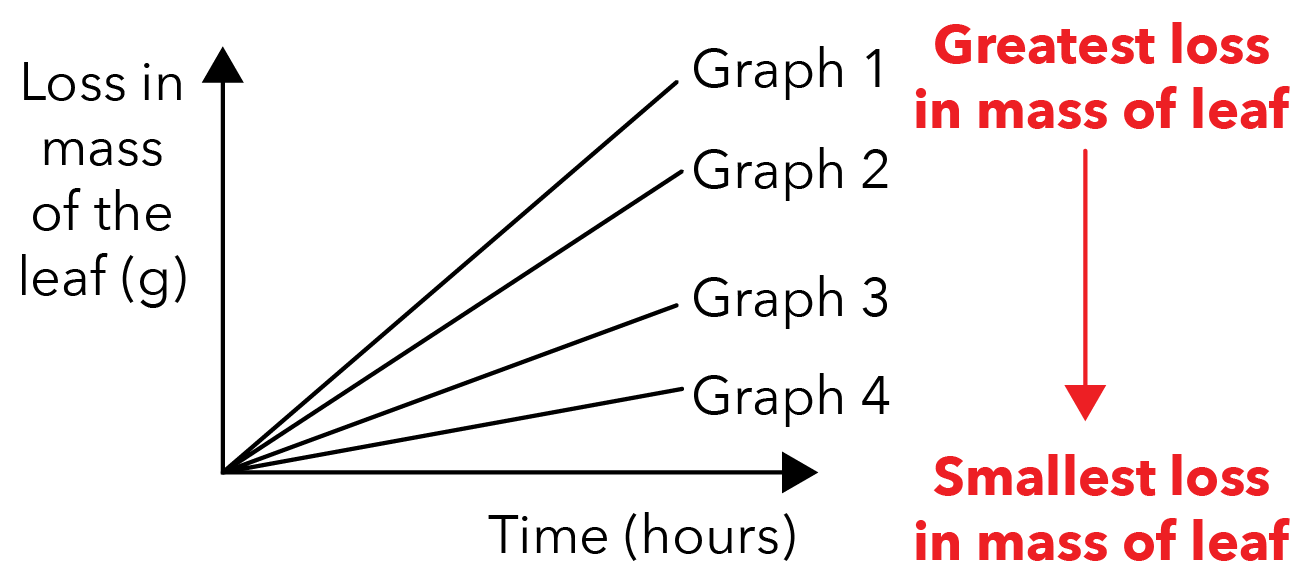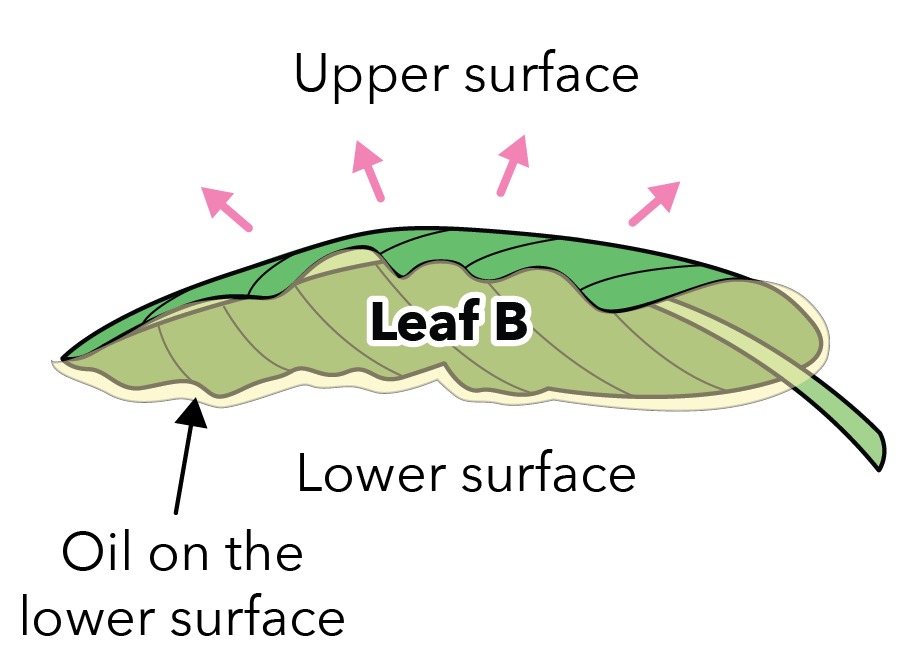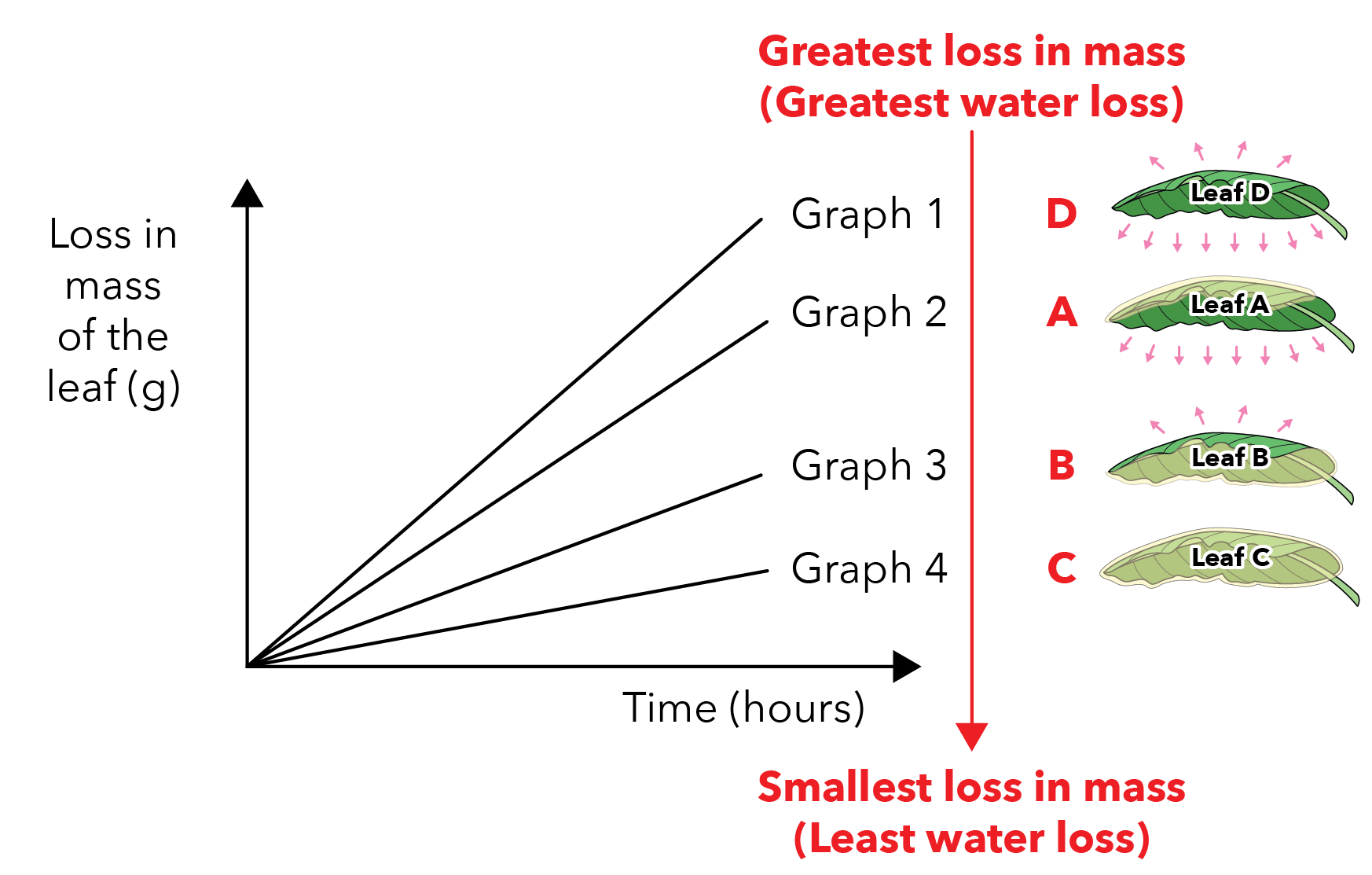Have you ever seen such questions in your school examination papers?

Source: Singapore Chinese Girls’ School – 2019 P6 SA2 Examination Paper [Q6]
For those of you that have encountered such questions, you may have found it daunting to solve them as there are multiple concepts tested in one question:
- What is the function of the stomata?
- How does coating leaves with oil affect their mass?
- What is the difference between the upper and lower surface of the leaf?
Today, I will be discussing a question from the 2014 Maha Bodhi School P6 SA2 Examination Paper to address the 3 concepts mentioned above.
Read Also:
Let’s Take A Look At This Question

Source: Maha Bodhi School – 2014 P6 SA2 Examination Paper [Q7]
Thought Process
Let me restate the 3 concepts that I wish to explain in this article:
Concept 1: What is the function of the stomata and how does it affect the mass of a leaf?
Concept 2: How does coating leaves with oil affect their mass?
Concept 3: What is the difference between the upper and lower surface of the leaf?
To kickstart our analysis, let us discuss the first 2 concepts.
Concept 1: Linking The Function Of Stomata To The Change In Mass Of A Leaf
In P4, you would have learnt that leaves have tiny openings called stomata.
“Do you recall the function of the stomata?”
The stomata allow the leaf to carry out gaseous exchange for processes such as photosynthesis, respiration and transpiration.
“After some time, what happens to the mass of the leaf?”
The mass of the leaf decreases.
“Why does the mass of the leaf decrease over time?”
It is due to transpiration!
Transpiration is the process where water in the leaf is lost through the stomata as water vapour. As a result, will there be more or less water left in the leaf? There will be less water left.
Since there is less water left in the leaf, its mass decreases.
Concept 2: Coating Leaves With Oil Affect Their Mass
When the leaf surface is coated with oil, the purpose of oil is to block the stomata and prevent water loss from the leaf surface as water vapour.
Thus, will there be more or less water left in the leaf? There will be more water left as compared to a leaf without oil.
We can conclude that the mass of a leaf coated with oil will be greater than the mass of a leaf without oil.
To summarise the 2 concepts above:

With this understanding, we will now begin our analysis for the question below!
Analysing The Question
For this question, Ali coated different surfaces of leaves A to D with oil and measured the decrease in the mass of the leaves after a few hours.
The question also mentioned two pieces of key information, which we will highlight to help with our analysis:

🍃 Key information A: The leaves have more stomata on their lower surfaces than upper surfaces.
🍃 Key information B: Leaves lose water through their stomata, which we have discussed earlier.
Concept 3: Difference Between The Upper And Lower Surface Of The Leaf
Earlier, we identified 3 concepts and we have yet to explain the 3rd concept mentioned.
What is the difference between the upper surface and lower surface of the leaf?
Key information A above has provided us with the answer. There are more stomata on the lower surfaces than on the upper surfaces of the leaves.
Analysing The Graph
From the graph in the question, we can observe that the loss in mass of the leaf in Graph 1 was the greatest, followed by the leaf in Graphs 2, 3 then 4.

Looking at the blue summary box above, we have explained that the decrease in mass of the leaf is due to the water lost through the stomata as water vapour.
Since the leaf in Graph 1 lost the greatest mass, what can we say about its amount of water loss?
We can infer that the leaf in Graph 1 lost the most amount of water through the stomata, followed by the leaf in Graphs 2, 3 then 4.

Analysing The Leaves
From the table in the question, we observe that leaves A, B, C and D have different surfaces coated with oil. The struggle many students face is visualising how much water is lost from the stomata of each leaf.
Thus, in our analysis, I will also provide simple illustrations of leaves A to D to compare the amount of water lost through the stomata of each leaf easily.

The most effective way to tackle this type of question is to start analysing from either the leaf that is fully coated with oil on both surfaces (Leaf C) or the leaf that has no oil coating on any of the surfaces (Leaf D).
I will start my analysis with Leaf C in this question.
Leaf C
From the table, both the upper and lower surfaces of leaf C are coated with oil:

Since both the upper and lower surfaces of the leaf are blocked by oil, water cannot be lost through the stomata at all. As such, leaf C would have the smallest loss in mass.
Leaf D
From the table above, both the upper and lower surfaces of leaf D are not coated with oil:

Since both the upper and lower surfaces of leaf D are not coated with oil, water can be lost through both the stomata on the upper and lower surface of the leaf.
To illustrate the loss of water through the stomata of leaf D as water vapour, I’m going to use arrows to represent them.

Thus, leaf D would lose the most amount of water through the stomata as water vapour and would have the greatest loss in mass.
Comparing Leaves A And B
From the table above, the upper surface of leaf A is coated with oil while the lower surface of leaf B is coated with oil.
⭐️ TIP: To analyse the amount of water lost through the stomata, focus on the surface of the leaf that is NOT covered in oil (where water vapour can be lost) instead of the surface covered with oil (where water vapour cannot be lost).
Using the tip above, we shall focus on the surfaces of leaves A and B that are not covered with oil.
Leaf A
For leaf A, the lower surface of the leaf is not covered with oil and is exposed to the surrounding air. Thus, water can only be lost through the stomata on the lower surface of the leaf.

Leaf B
For leaf B, the upper surface of the leaf is not covered with oil and is exposed to the surrounding air. Thus, water can only be lost through the stomata on the upper surface of the leaf.

Since both leaves A and B have only one surface of the leaf that is not coated with oil and exposed to the surrounding air, does that mean they would both lose the same amount of water through the stomata?
The answer is no. Why?
Remember the two key information A and B we highlighted from the question?
🍃 Key information A: The leaves have more stomata on their lower surfaces than upper surfaces.
🍃 Key information B: Leaves lose water through their stomata, which we have discussed earlier.
Since the lower surface of the leaf has more stomata than the upper surface, having only the lower surface of leaf A exposed to the surrounding air results in more water vapour lost through the stomata of leaf A than leaf B, which only has its upper surface exposed to the surrounding air.
Once again, to illustrate the loss of water through the stomata of leaf A and leaf B as water vapour, I’m going to use arrows to represent them, where more arrows imply more water loss as water vapour.


Linking Back To The Mass Of The Leaf
From the diagram above, since there is a greater amount of water lost for leaf A than leaf B, there would be a greater decrease in mass for leaf A than leaf B.
Final Analysis
Now that we have analysed all 4 leaves, let’s arrange them in order from the leaf with the greatest loss in mass to the leaf with the smallest loss in mass and match them to the corresponding graphs as shown below:

Using the diagram above, the loss in mass of leaf B is represented by graph 3 and the loss in mass of leaf D is represented by graph 1.
Suggested Answer
Thus, the correct option for the question will be (4).
Moving Forward
I hope that you have enjoyed reading this article and have gained a better understanding of the following concepts:
- The oil blocks the stomata of the leaf, preventing any water from being lost through the surface of the leaf coated with oil.
- The decrease in the mass of the leaf is due to the water lost through the stomata as water vapour.
- The upper leaf surface with more stomata would lose more water than the lower leaf surface with less stomata.
Stay tuned for our new articles on how to tackle other Science questions!

If you like our methodology, we've some upcoming workshops:







